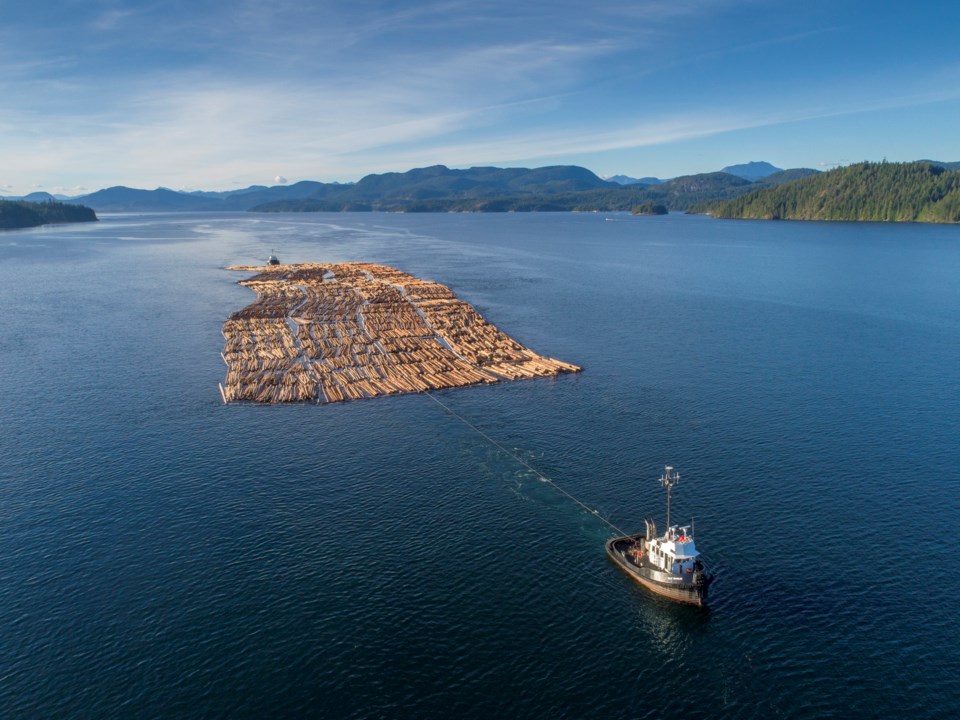The closest I've ever been to an explosion was a mining engineering field trip at university. My class piled into a bus bound for a rural Queensland coal mine and spent the day observing the mine’s operations, mostly watching big equipment rolling around from a safe distance. But our professor knew what would give us all a story to take home, so he timed our visit with the day’s blast. We watched from about a kilometre away, and saw the smoke and debris cloud as the ground shock wave reached us. We heard the blast moments later.
My career could have steered towards blowing up the ground in Australian mines, but I ended up in B.C. instead. And it was while visiting its picturesque coast I learned about one of the largest non-nuclear explosions in Seymour Narrows 65 years ago; the destruction of the underwater mountain known as Ripple Rock.
Before I get to the very big blast, a bit of history and geographic context is needed. Seymour Narrows is a 5.1-kilometre stretch of Discovery Passage which connects the Strait of Georgia with Johnstone Strait and the northern coast of Vancouver Island. The two peaks of Ripple Rock were just 2.74 metres and 6.4 metres below the surface, respectively (at low tide), allowing strong tidal currents to create large and very dangerous eddies. Captain George Vancouver himself described the Seymour Narrows as “one of the vilest stretches of water in the world,” and he was right.
Ripple Rock claimed its first victim in 1875, sinking the sidewheel steamer USS Saranac. Over the next 80 years or so, Ripple Rock would claim at least 114 lives by sinking more than 20 large vessels and at least 100 small vessels. The same stretch now will see several cruise ships a day bound for Alaska without issue. At high tide, of course.
Recommendations by marine commissions called for the rock’s removal as early as 1931, but it wasn’t until 1942 that authorization was finally given to blow the thing up. The removal had its opponents, but not for preservation or cultural reasons. People wanted Ripple Rock to serve as support for a railway bridge to connect Vancouver Island to the mainland. Making passage safer for ships was given a higher priority.
The initial attempts to remove the rock in the 1940s were unsuccessful. A drilling barge was floated over the rock with 3.8-centimetre- diameter steel cables attached to six concrete anchors totalling 998 tonnes. The plan was to drill into the rock from above and use explosives to smash away at it, bit by bit. Ripple Rock wasn’t having it. The violent waters broke a steel cable an average of once every 48 hours.
A second attempt with the drill barge was to suspend overhead steel cables over Seymour Narrows to hold the barge in place.
The turbulent waters once again sent the drilling barge on its way with only 149 holes drilled (of the 1,500 or so needed) and the contract was terminated.
A few years later, Canada’s National Research Council gauged the feasibility of tunnelling into Ripple Rock from underneath. This is when the consulting engineers got crafty. They enlisted hard rock miners to dig a vertical shaft on nearby Maude Island (off the western edge of Quadra Island) and about 75 men worked three shifts a day around the clock, the miners advancing an average of 1.8 metres per day to complete the 174-metre- deep shaft. They then slowly and meticulously tunnelled 762 metres under the narrows to reach Ripple Rock from below. Two 91-metre- high tunnels were then dug vertically into the heart of the rock, with a series of “coyote” tunnels shooting out horizontally.
More than a thousand tonnes of Nitramex 2H (the most advanced TNT explosive at the time) were packed into those tunnels. Rumours had circulated that nearby Campbell River would be flattened in the blast, and the shock wave would cause a tsunami that would damage the Japanese coast. Millions of fish and whales would die, they said. Local residents were instructed by authorities to open all their windows to avoid the shock wave shattering them.
When the big red button was finally pushed, on April 5, 1958, the blast hurled 635,040 tonnes of water and rock more than 304 metres into the air, causing a 7.6-metre tsunami that quickly dissipated. The Fisheries Department confirmed that five orcas, a school of porpoises, two sea lions and one fur seal spotted in the area before the explosion were all seen again after the dust had settled.
The largest non-nuclear blast in the world at the time was one of the first national live coverage events by the CBC. Even a handful of British atomic weapons researchers were sent to observe the explosion. The destruction of Ripple Rock is remembered as one of Canada’s modern engineering marvels.
Vince Shuley is fascinated by large, non- violent explosions. For questions, comments or suggestions for The Outsider email vince.shuley@ gmail.com or Instagram @whis_vince.




